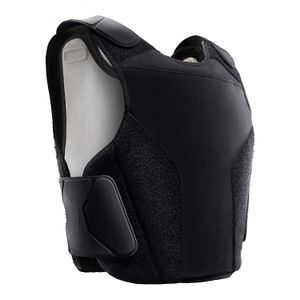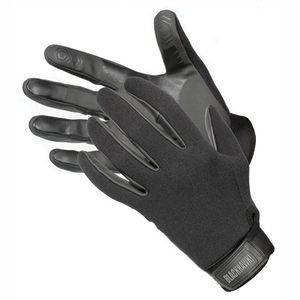

This second generation of light body armor has been developed by Solas Tempus Engineers as an experimental platform for developing personal deflector shields. The armor is currently in its third prototype phase, and has passed its laboratory experimentation.
Deflector Shields
While it is slightly thicker than the Class 1D Body Armor this additional thickness provides space for a simple shield grid to be installed. The grid projects outward from the armor but confines itself dynamically to remain skin tight and allow the wearer to interact with objects. A more powerful series of emitter arrays line the waist, neck, and arm hem lines to project the shield outward and cover the extremities.
Capabilities / Issues
Laboratory experimentation has been successful at projecting the shield surface to cover the entire body, however, testing done on confining the field to wrap around the fingers and allow interaction with ones environment has been less successful. Currently, the armor's deflector system still has problems allowing the wearer to interact with objects. To overcome this issue, specialized gloves can be worn with give the shield emitters access to sensors in the gloves which then allow the system to better confine the field. Another problem has come up in handling of weapons, without the gloves handling weapons has been problematic, as the static shield must stop at the hands to allow the weapons to function, it can potentially leave the hands themselves open to damage.
This is less than ideal, and it is hoped that through more practical testing a better solution can be found. One suggested solution is to have the armor have multiple modes, a skin-tight mode which offers limited protection of the hands but allows for dexterous handling of objects and weaponry while a second mode allows for a projected shield in a spheroid pattern to provide more robust protection. Several sensor algorithms have been produced to attempt to automate transition between two such modes.
Protection
The armor itself provides similar protection as the Class 1D series, though it is slightly less effective against kinetic damage without the shield emitters active. The shield grid itself is also susceptible to bleed-through damage, approximately a 31% of kinetic energy bleeds through and 24% of EM bleeds through upon directed impact to the armor. This does not, however, include ambient radiation which the shield allows 100% protection from while power output is maintained.
The shield system should be able to protect the wearer from at least 5-7 direct energy weapon hits as well as 2-4 direct kinetic impacts. Laboratory tests have shown the shield collapses when hit with a significant concussive wave and thus can protect the wearer against a nearby explosion, but just once. Such an explosion disables the shield grid due to damage / overload about 67% of the time.
Recharge / Power
Power is supplied by a specialized power cell which is equipped with a rapid recharge capability. The system is able to recharge a depleted shield within 4-5 minutes of being deactivated. The regenerative capacity is still experimental, however, and has not been fully tested in real-life conditions. Laboratory tests have been very effective, however.